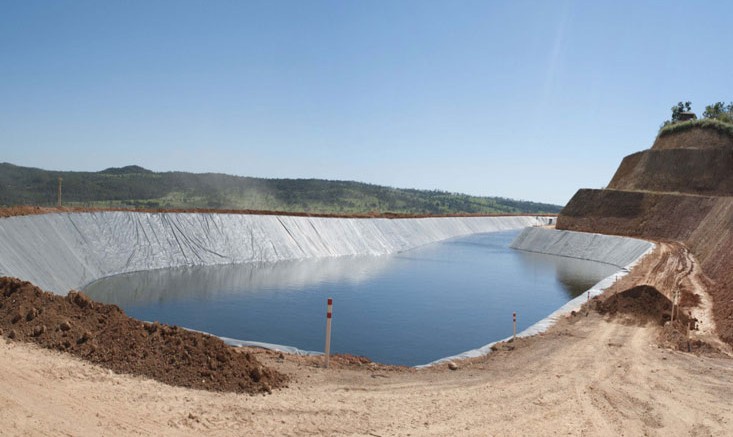After a three-year decline, phosphate fertilizer prices are rising again. Prices for diammonium phosphate, the most commonly used fertilizer, have increased by 20% since bottoming last November, while prices for triple super phosphate have climbed by 32% since hitting five-year lows in 2013, according to figures from MBAC Fertilizer (TSX: MBC; US-OTC: MBCFF).
Improving international prices for phosphate products are impacting prices for single super phosphate (SSP), says the company, which began producing SSP powder last year at its Itafos Arraias project in Brazil. The Itafos complex in central Brazil consists of a phosphate mine, mill, beneficiation plant, sulphuric acid plant, SSP plant and a granulation plant.
“We’re constructive on the phosphate market and where prices are going over the forseeable future,” says Steve Burleton, MBAC’s vice-president of corporate development, noting that Brazil imports 50% of its phosphate.
One of the big drivers will be India, he says, where demand has been weak. “With their subsidy program that has favoured nitrogen to the detriment of phosphate and potash, it has not been a big purchaser over the last few years,” he explains. “But you can’t keep applying small amounts of potash and phosphate and expect reasonable yields — it’s going to have an impact — so the market’s expectation is that we’ll see stronger demand in India, which will buoy prices . . . the key thing is the view that India over the next year or two will be back in the market.”
According to Salman Partners, phosphate prices are expected to rise 5% per annum over the next few years as Asian demand grows.
Companies with phosphate projects in Brazil are poised to benefit, MBAC’s Burleton says. The country’s fertilizer consumption grew between 4% and 5% last year, and is expected to grow at the same rate again this year, he says. Brazil is the world’s number-one exporter of beef, soy, oranges and sugar. “They’ve got a lot of products that people want,” he says, adding that land with nutrient-poor soil in central and northern Brazil used traditionally for cattle farming is being converted into agricultural land. “You’re seeing these large corporate farms moving into the area and buying tens of thousands of hectares at really inexpensive prices and converting it into productive cropping space,” he says.
MBAC says the agricultural industry accounts for 25% of Brazil’s growth domestic product, and the country imports more than 90% of its potash and over 40% of its phosphate fertilizer requirements. “There’s a huge opportunity for companies like us to step in,” he says. “We’re in-country and we can deliver much faster, and people can check the quality of the product.”
MBAC expects Itafos Arraias will produce 345,000 to 375,000 tonnes of SSP in 2014, 445,000 to 475,000 tonnes in 2015, and 470,000 to 500,000 tonnes in 2016.
The company has received firm commitments for 25% of its expected SSP sales for 2014 and advanced payments on part of the sales. MBAC also announced that it has signed a sales agreement with a regional distributor that intends to buy 70,000 tonnes, of which orders for 30,000 tonnes are firm.
It also anticipates that it will sell 45,000 to 50,000 tonnes of sulphuric acid this year, 35,000 to 45,000 tonnes of sulphuric acid in 2015, and the same amount in 2016. At full capacity, Itafos is expected to produce 220,000 tonnes of sulphuric acid, of which the company requires 170,000 tonnes, leaving 50,000 tonnes available to be sold into the merchant market. There is fairly strong demand for the company’s excess sulphuric acid, including from a nearby pulp and paper company, and several fertilizer companies in the area.
But MBAC’s Santana project — in the southern part of Para state, close to the border of Mato Grosso state, the largest fertilizer-purchasing state in Brazil — is the company’s crown jewel, Burleton says. A feasibility study completed in October 2013 envisioned production of 500,000 tonnes of granulated SSP a year. The study put total capital costs for the project of US$427 million, including a US$50-million contingency.
Santana has an estimated 32-year mine life based on current reserves of 45.5 million tonnes with an average grade of 12.9% P2O5 at a 3% cut-off grade. The project is expected to start in 2016, with the first full year of production in 2017.
Santana’s SSP is targeted for end-users in the northern and eastern parts of Mato Grosso, the largest soybean producer in the country. Late last year MBAC estimated that SSP demand in Mato Grosso alone is 1.5 million tonnes a year, and forecasts that demand will grow at least 20% by 2015, with projected demand in 2015–2016 of between 1.8 million tonnes and 1.9 million tonnes of SSP a year.
Burleton says the company has been talking to a number of potential partners for financing Santana, one of which has offered up to $75 million in debt or equity financing in a letter of intent. “We are going through a strategic process to see whether it makes sense to bring in a partner to fund a portion of the equity,” he says. “It’s something we’re moving forward, but we need to make sure we can fund this project without risking significant dilution to our shareholders, so we continue to look at a number of options.”
In January MBAC appointed Cristiano Melcher as its president and CEO, replacing Antenor Silva. Prior to his appointment, Melcher served for three years as CEO of Fosbrasil, South America’s leading producer of purified phosphoric acid. Before joining Fosbrasil, Melcher was an executive director and board member of Copebras, a leading Brazilian phosphate fertilizer producer owned by Anglo American (LSE: AAL).


Be the first to comment on "MBAC thriving in Brazil’s fertilizer sector"